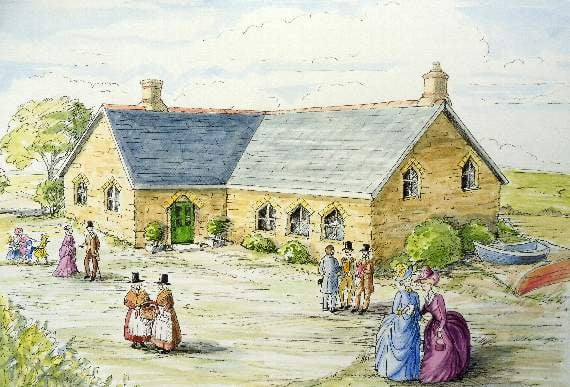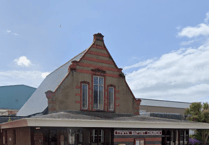The exhibition – a preview of what will eventually be used to create a town trail in the summer - took place from 13 to 18 May and included a wealth of information.
Sharing some of that information with the Cambrian News is Dr Quentin Deakin who, as well as being secretary of the Tywyn and District History Society and author of the Tywyn Town Trail boards and leaflets that will be ready in July, has also lived in Tywyn with his wife for the last six years and taken holidays in the town every year since 1990.
“Tywyn, a small town with a big history,” said Dr Deakin.
“Although a time traveller from 1900 would feel at home on much of the high street today, even before its late Victorian makeover, Tywyn had strong claims to importance as a religious centre.
“In the medieval period St Cadfan’s was a major church, a destination for pilgrims travelling to Bardsey. However, not even Cadfan’s arrival in the early sixth century takes us back far enough.
‘Tywyn’ means ‘sand dunes’ and it is by the shoreline that this story begins. After winter storms, remnants of a prehistoric forest emerge.
The submerged land surface extends southwards, re-emerging at Ynyslas.
Like much of Britain’s western shoreline, the Tywyn area was inhabited from the late ‘Stone Age’, axes, halberds and bowls indications of scattered settlement long before the arrival of Christianity.
“The town as we know it today formed around a church founded by Cadfan, a Breton missionary.
“It became a ‘college’, sending missionaries north. By the 12th century it was, according to a contemporary, Llwelyn Fardd I, ‘a much visited’ whitewashed church standing on ‘the shore of the blue sea’. In 1188, Baldwin, Archbishop of Canterbury and Gerald, famous for his Description of Wales, chose Tywyn as their first stop in north Wales after crossing the Dyfi. They met Gruffydd ap Cynan, joint ruler of Meirionnydd, giving us a sense of the importance of medieval Tywyn.
“In the era of the Romantic poets, Tywyn attracted rich tourists drawn by its picturesque scenery. The modern estate of Plas Edwards bears the name of the house built for John Edwards of Machynlleth, who chose Tywyn for his second home. Even as a child preoccupied by the collection of rare insects, Darwin stayed there for three weeks in 1819. The house no longer exists, unlike the aptly named Neptune Hall, still an unmissable south shore landmark. Built in the 1840s, the decade of the planet’s discovery, the hall became a fashionable ‘boarding house’.
See last week’s north editions for the full story, in shops and online now





Comments
This article has no comments yet. Be the first to leave a comment.